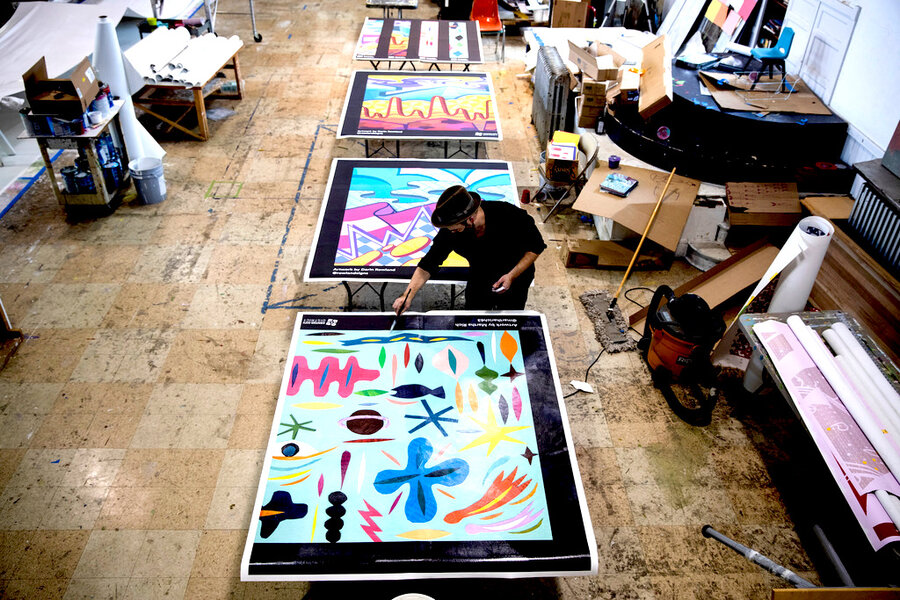Urban art as city corrective
Loading...
Recent drone shots high above Los Angeles have captured new and provocative images of a building that a movie director might someday find a way to monetize. The images show a long-abandoned, 27-story skyscraper with much of its exterior covered in colorful graffiti.
Is it beautifully crafted art or an eyesore left by vandals?
Some photographers gave attention to it because they believe someone took an ugly building and made it pretty. Meanwhile, Los Angeles City Council member Kevin de León said the city should not be an open canvas for any budding artists.
Such “creative place-making” as public art is sometimes called – even if done illegally – is often allowed by cities. It comfortably coexists with art in museums. Finding a balance between the two has become essential in urban areas. Philadelphia, in particular, offers an example of how public art has grown in acceptance, especially when it uplifts neighborhoods.
For more than 40 years, the Mural Arts Philadelphia program in the city has transformed blighted areas into wondrous public spaces. It started as the Anti-Graffiti Network to combat entropic acts of vandalism via graffiti and turn them into permanent art with endless canvases. It has grown to include initiatives such as the Restorative Justice program, which is centered around reentry for formerly incarcerated people and can include part-time employment. There is also the environmental justice program, which builds and restores green space.
Another organization, The Village of Arts and Humanities, has been transforming blocks in north Philadelphia with creations to support artists and Black residents in imagining a more just society. In 2021, as part of an exhibit entitled “Staying Power,” artists displayed larger-than-life photographs of five local women who had been released from prison after serving decades behind bars.
The People’s Paper Co-op was started in 2014 as an arts workshop to help individuals get existing criminal records expunged. People whose records were expunged turned their paper versions into pulp, made new paper, and wrote down what their future lives might look like. A more recent effort, called “Village Oracle,” allowed 14 Black artists to display their art on construction fencing.
“There is no shortage of good ideas and excellent practitioners already present and active in Philadelphia, addressing pressing concerns of safety, health, and education through creative place-making,” wrote Andrew Zitcer, a professor in the Westphal College of Media Arts & Design at Drexel University, in The Philadelphia Inquirer in 2021.
When a city such as Philadelphia – or Los Angeles – experiences high levels of violence, drug use, and homelessness, many residents can’t leave. Yet they keep living, which also means imagining the best version of themselves. Public art allows people to encounter beauty and ingenuity for themselves and others. That aesthetic contribution in places where they live can’t be ignored. A newly decorated skyscraper in LA helps explains why.





